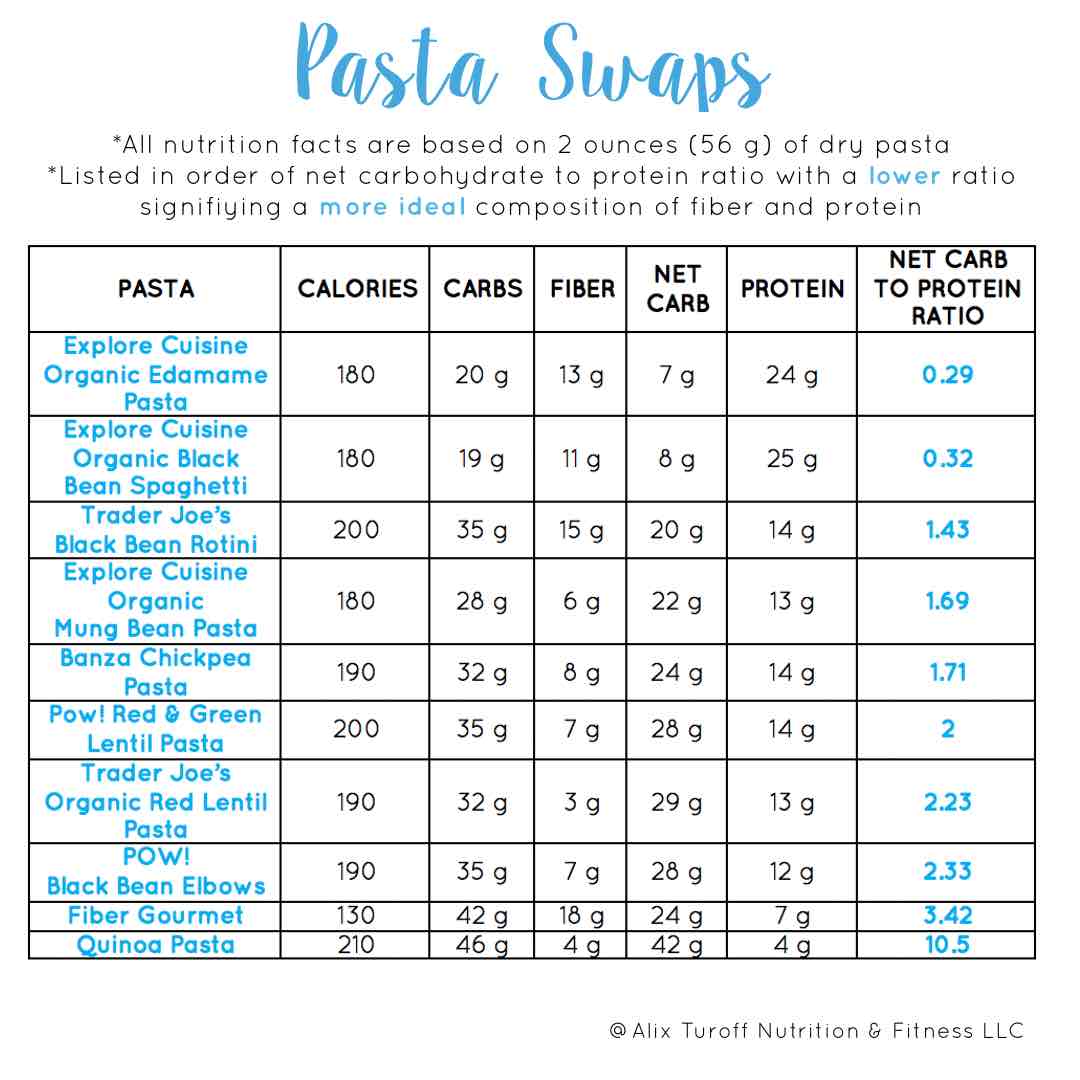Zucchini noodles and spaghetti squash are great low carb alternatives to pasta but sometimes you just want some penne or ziti. I’m a big proponent of making regular pasta or a legume based pasta and mixing it with veggies to add volume, fiber and nutrients.
There are so many different pasta alternatives on the market now that I thought it would be helpful to analyze and compare some of the most popular.
Food companies are taking all kinds of things and turning them into pasta and I must say, I’m here for it.
Not only are many of these options lower in carbs, higher in fiber and higher in protein, but many of them are also gluten free! Not only that, but they’re a great way to turn a traditional high carbohydrate meal into one that’s more balanced, thanks to the protein that the legumes provide.
I took a look at 11 different pasta alternatives on the market (listed below) and then compared their nutrition facts.
First, let me introduce you to the contenders:
1. Explore Cuisine Organic Edamame Pasta:
-
Ingredients: Organic Edamame (Soybeans)
2. Explore Cuisine Organic Black Bean Pasta:
-
Ingredients: Organic Black Beans
3. Trader Joe’s Organic Black Bean Rotini:
-
Ingredients: Organic Black Bean Flour
4. Explore Cuisine Mung Bean Pasta:
-
Ingredients: Organic Mung Bean Flour
-
Ingredients: Chickpeas, Tapioca, Pea Protein, Xanthan Gum
6 & 7. POW! Red and Green Lentil High Protein Pasta
-
Ingredients: Red Lentil Flour, Quinoa Flour
8. Trader Joe’s Organic Red Lentil Sedanini
-
Ingredients: Organic Red Lentil Flour
-
Ingredients: Black Bean Flour, Brown Rice Flour, Organic Quinoa Flour.
-
Ingredients: Enriched Durum Semolina (Niacin, Iron, Thiamine Mononitrate, Riboflavin, Folic Acid), Modified Wheat Starch (resistant starch, a source of fiber), and Wheat Gluten
11. Ancient Harvest Quinoa Pasta
-
Ingredients: Organic Corn Flour, Organic Quinoa Flour
Now, let’s take a look at how they stack up against each other!
First, let me mention that I REALLY nerded out here and decided to list these in order of “net carbohydrate to protein ratio”.
Why did I do that?
Because I didn’t want to only look at carbs and fiber here. I also wanted to take into account protein. By creating a ratio of net carbohydrate to protein, I was able to rank these pastas more objectively by giving equal attention to both carbohydrate and protein.
*Just a note: All of the nutrition facts in this chart are based off of a 2 ounce (or 56 gram) DRY weight. Something to keep in mind… All the calories were more or less the same, ranging from 180-210 calories with the exception of the Fiber Gourmet Pasta which has only 130 calories per serving.
I was pretty blown away by the nutrition facts on the Explore Cuisine Edamame and Black Bean Pasta. For those with a soy allergy or sensitivity, the black bean pasta is a great alternative. I love that not only are these pastas higher in fiber and protein than their traditional counterparts, they’re also MOSTLY gluten free (always read your labels!)


